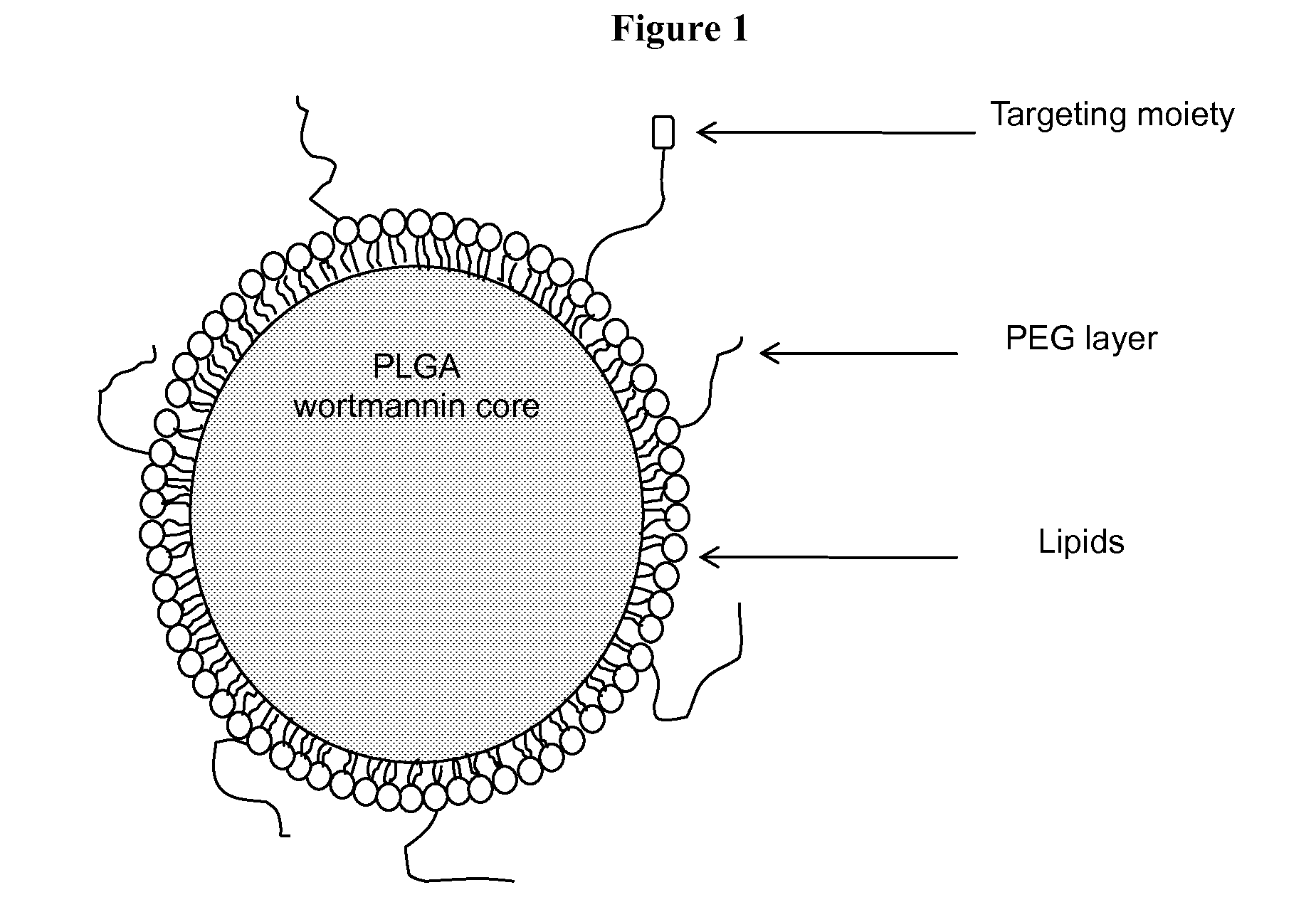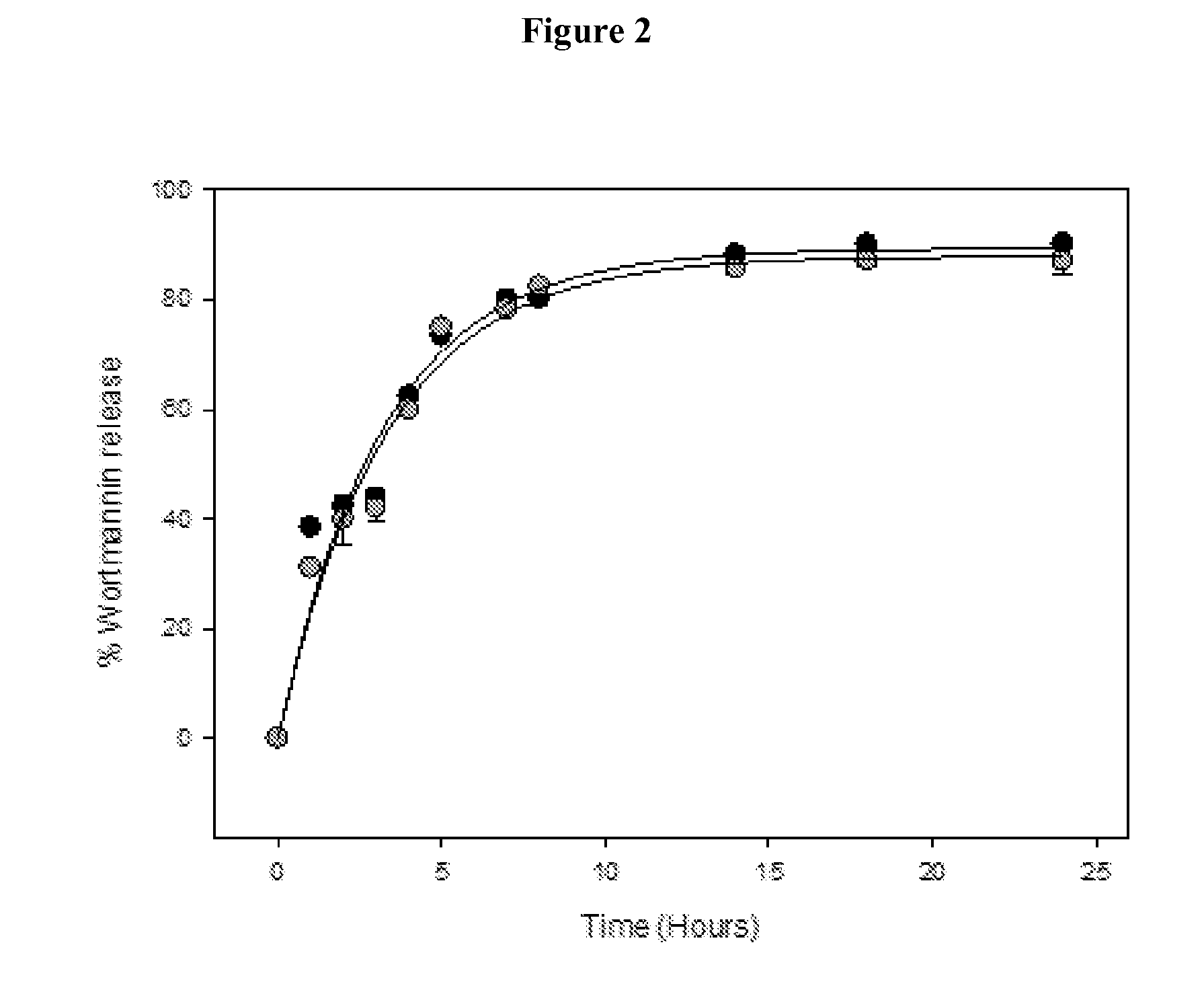DNA repair enzyme inhibitor nanoparticles and uses thereof
a technology of repair enzyme and nanoparticles, which is applied in the field of dna repair enzyme inhibitor nanoparticles, can solve the problems of drug inability to be translated clinically, drug potentials that cannot be demonstrated, cell death, etc., and achieve the effect of enhancing radiation treatmen
- Summary
- Abstract
- Description
- Claims
- Application Information
AI Technical Summary
Benefits of technology
Problems solved by technology
Method used
Image
Examples
Embodiment Construction
5.1. Introduction
[0031]This invention pertains to formulations of DNA double-stranded break (DSB) repair enzyme inhibitors such as wortmannin and KU-55933 that show unexpected increases in bioavailability and synergistic effects when used in combination with radiation. Furthermore, the invention provides nanoparticle formulations of DNA double-stranded break (DSB) repair enzyme inhibitors suitable for use in vivo, formulations of DNA double-stranded break (DSB) repair enzyme inhibitors in nanoparticles in a pharmaceutically acceptable carrier. The present invention provides for a method of inhibiting PI-3-kinase activity as well as other targets of DNA double-stranded break (DSB) repair enzyme inhibitors by administration of an effective amount of DNA double-stranded break (DSB) repair enzyme inhibitors encapsulated in nanoparticles. The DNA double-strand break repair enzyme inhibitor may be a covalent inhibitor, e.g., wortmannin. It may be a competitive inhibitor, e.g., KU-55933. I...
PUM
| Property | Measurement | Unit |
|---|---|---|
| zeta potential | aaaaa | aaaaa |
| zeta potential | aaaaa | aaaaa |
| diameter | aaaaa | aaaaa |
Abstract
Description
Claims
Application Information
 Login to View More
Login to View More - R&D
- Intellectual Property
- Life Sciences
- Materials
- Tech Scout
- Unparalleled Data Quality
- Higher Quality Content
- 60% Fewer Hallucinations
Browse by: Latest US Patents, China's latest patents, Technical Efficacy Thesaurus, Application Domain, Technology Topic, Popular Technical Reports.
© 2025 PatSnap. All rights reserved.Legal|Privacy policy|Modern Slavery Act Transparency Statement|Sitemap|About US| Contact US: help@patsnap.com



